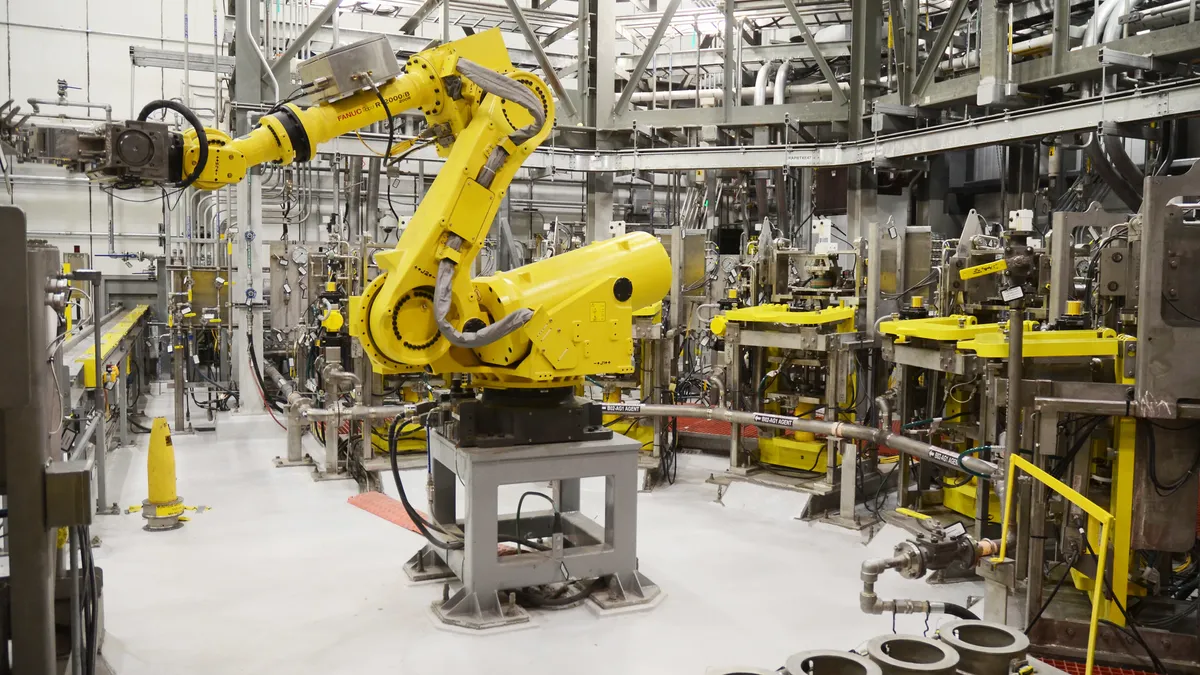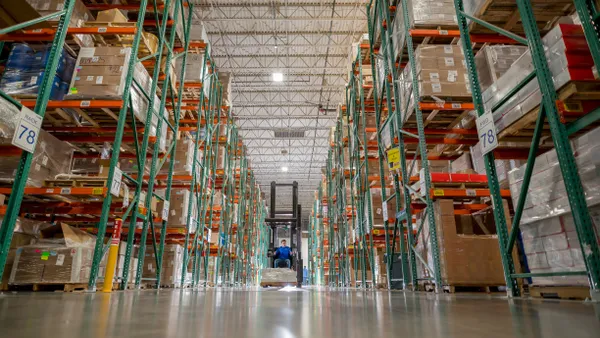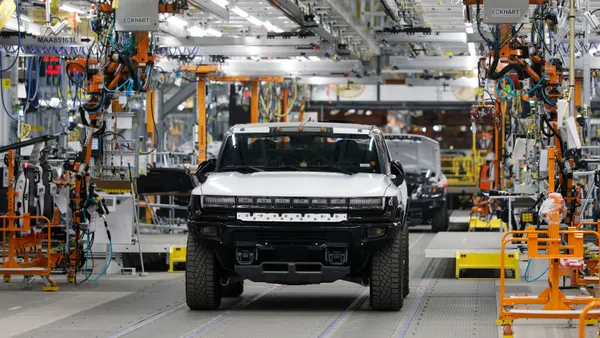Dive Brief:
- Sales value for robots hit a record high in 2018 reaching $16.5 billion for the year with 422,000 robotic units shipped, according to a new report from the International Federation of Robotics (IFR).
- The IFR expects shipments to decline slightly in 2019 compared to 2018. However it expects sales to grow by more than 10% from 2019 into 2020, increasing from 421,000 units to 465,000 units.
- It found that collaborative robots (cobots) accounted for just over 3% of robot installations in 2018. There were fewer than 14,000 cobots installed that year out of more than 422,000 total industrial robot installations.
Dive Insight:
While cobots only make up a small number of installations compared to traditional robots, investment in this area is on the rise. The market for cobots reached more than $649 million in 2018 and is expected to expand at the compound annual growth rate of 44.5% from 2019 to 2025, according to a forecast by Grand View Research.
Cobots are more flexible in what they can be used for and are often able to be reconfigured, but for cobots to offer their human counterparts more convenience requires the proper allocation of tasks, according to research on the subject.
The most common use for cobots are applications where the robot and human work on tasks at the same time in the same space, according to IFR. "Often, the robot performs tasks that are either tedious or unergonomic – from lifting heavy parts to performing repetitive tasks such as tightening screws," an IFR report on cobots reads.
Deciding between cobots and traditional industrial robots comes down to the application being automated, IFR President Junji Tsuda told Supply Chain Dive in an email.
"When speed and absolute precision are the primary automation criteria it is unlikely that any form of collaborative application will be economically viable," the Tsuda explained. "In this case, a traditional, fenced industrial robot is — and will remain — the preferred choice."
The growth in sales for 2018 came even as the automotive and electronics industries, the main consumers for robotics, struggled, Tsuda said in a statement. The automotive industry accounts for nearly 30% of the total supply for robots, according to IFR.
"Investments in new car production capacities and in modernization have driven the demand for robots," the report reads. "Using new materials, developing energy efficient drive systems and high competition in all major car markets pushed for investments."
Investment in robotics in the electronics industry has been most affected by the trade war, IFR suggests, noting installations have declined 14% from 2017 to 2018.
"The US-China trade conflict imposes uncertainty to the global economy — customers tend to postpone investments," Tsuda said. The top five markets for this technology are China, Germany, Japan, the Republic of Korea, and the United States, the report found.
Going forward, the robotics industry will benefit from the continued trend toward automation as companies look to cut labor costs, increase speed or both. Improvements to robotic technologies will also help to facilitate this growth, IFR said.
This story was first published in our weekly newsletter, Supply Chain Dive: Operations. Sign up here.














